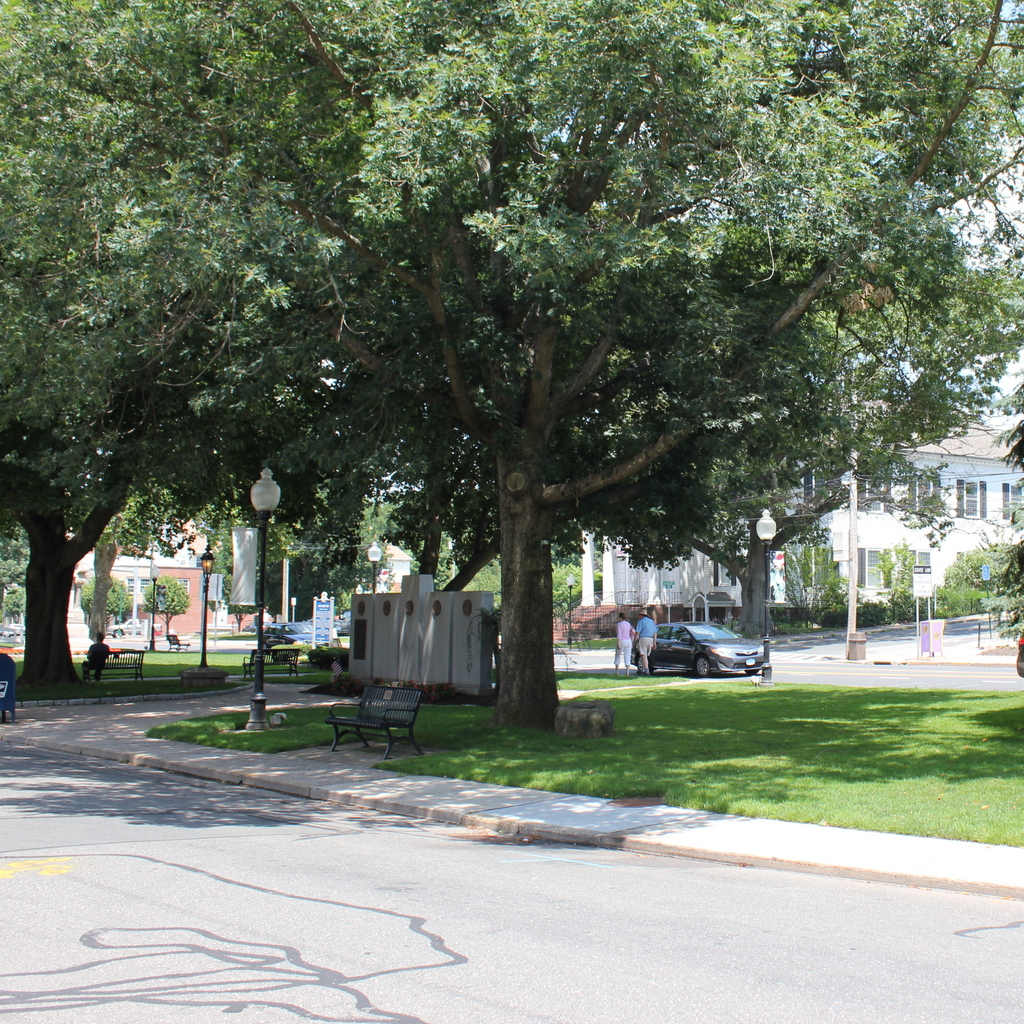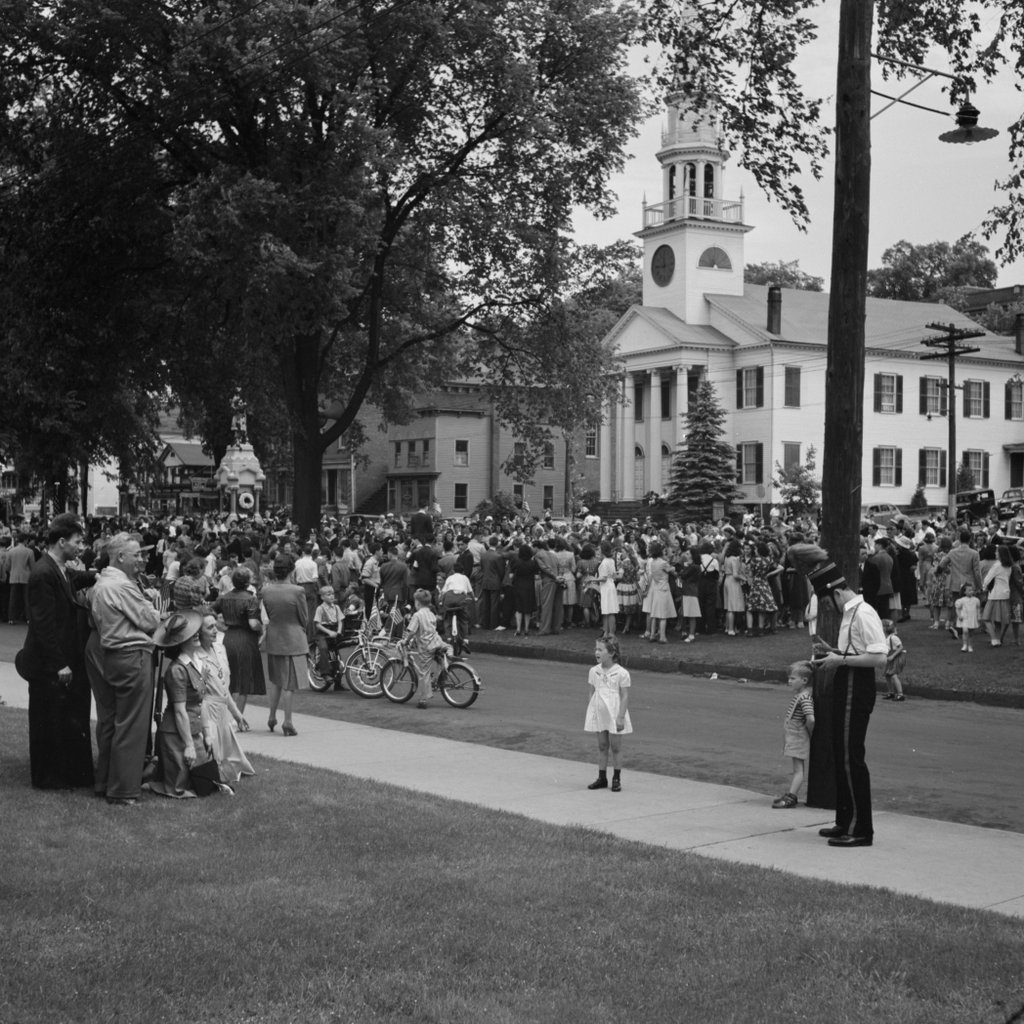A view of the spectators at the Memorial Day parade on Main Street in Southington in May 1942. Image courtesy of the Library of Congress, Detroit Publishing Company Collection.
The scene in 2015:

The first photo was taken by Charles Fenno Jacobs for the Office of War Information as part of the agency’s efforts to document life in a “typical” American town. Some of the photos were distributed overseas as part of a pamphlet to promote American ideas of freedom, democracy, and equality. This particular scene emphasizes the patriotism found in America, with the original caption reading, “Southington, Connecticut. An American town and its way of life. The Memorial Day parade moving down the main street. The small number of spectators is accounted for by the fact that the town’s war factories did not close.” Even the caption has some subtle wording; the “small number of spectators” reference is clearly intended to imply that this large gathering is small by American standards.
The photo shows the Memorial Day spectators watching the parade from the town green, with the Soldiers’ Monument in the distance to the left and the First Congregational Church on the right side of the photo. The scene in the foreground is interesting; the group on the left appears to be posing for a photo, with the young man in the band uniform as the photographer. In between them, the girl in the white dress looks like she is crying; perhaps she is upset that she was left out of the photo, or perhaps she was left out of the photo because she was crying about not wanting to be in it.
Today, the church is still there, but most of the other buildings along Main Street are gone. The place where the crowds once stood on the green is now the site of the town’s monument for veterans of World War II, the Korean War, and the Vietnam War. On the other side of the monument are the names of all the men and women from Southington who served in those wars; undoubtedly many of the people in the crowd had children, siblings, and/or spouses who were serving in the military in May 1942 and whose names now appear on the monument.

